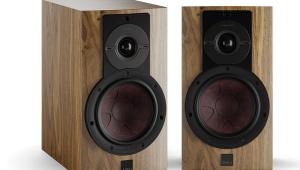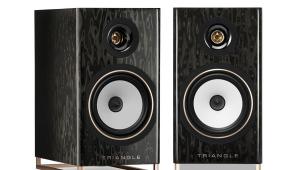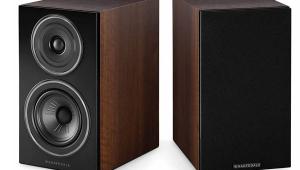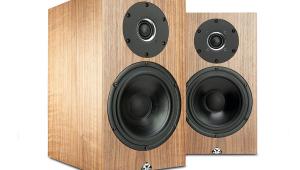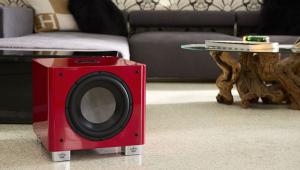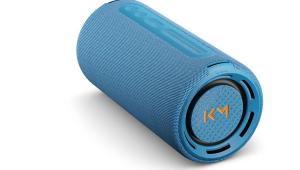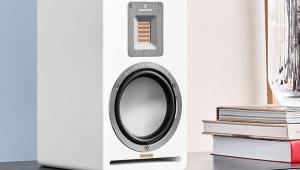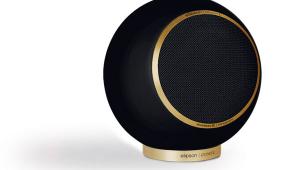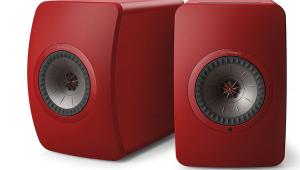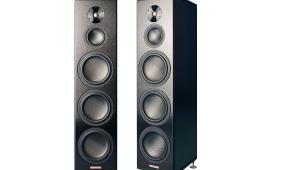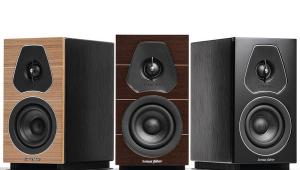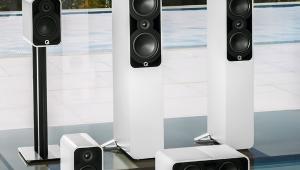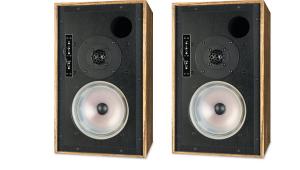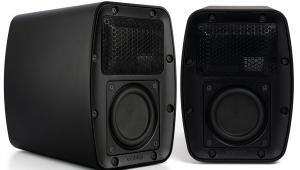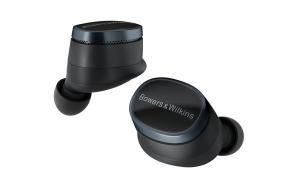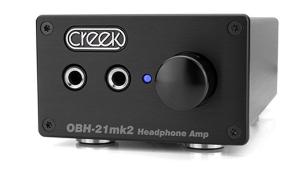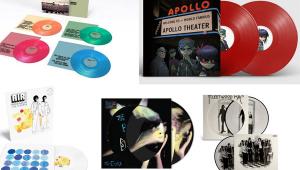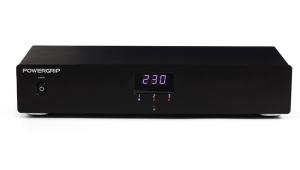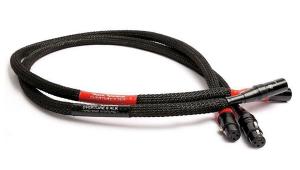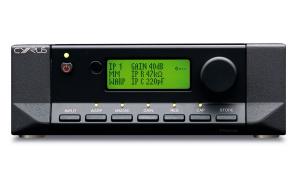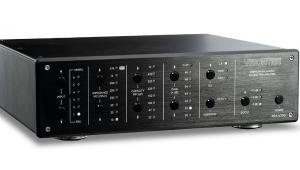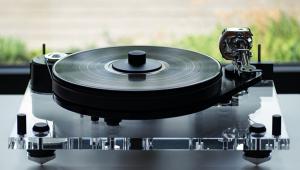Morel Soundspot 2.1 Ultra - £699
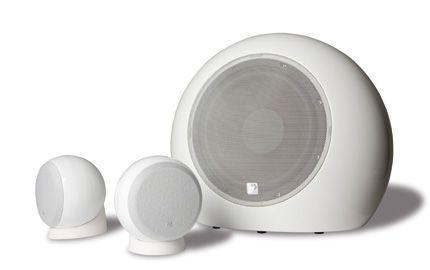
With the exception of REL and other longstanding subwoofer manufacturers, the concept of the 2.1 system is something that has really only come into its own since the arrival of the sub/sat package in the home cinema boom at the start of the millennium. The concept of small speakers that take up little space and are underpinned by a subwoofer that can be tucked away out of sight had advantages for getting a home cinema system into a space that otherwise couldn’t accept one. It didn’t take a genius to see this could be applied to a hi-fi setup too.
Israeli speaker company Morel already makes some fairly compact speakers, but the smallest offerings in the range are the SoundSpot SP-1 and SP-2 loudspeakers specifically designed as satellite speakers. The larger SP-2 tested here is a sphere that mounts a 100mm mid bass driver with a 19mm soft dome tweeter placed concentrically. As well as being aesthetically pleasing, the use of a spherical enclosure is sound acoustic practice too. The enclosure is the smallest it can be for a given internal volume and it also eliminates the points of resonance and standing waves that affect conventional square loudspeaker cabinets.
The SoundSpot sphere is a compact little thing about the size of a shot put, but not nearly as heavy. To maximise the spherical cabinet’s internal volume, the SoundSpot SP-2 is made from 1mm steel that is otherwise unbraced giving as much space inside the enclosure as possible. The 100mm driver is a bespoke design that’s built inhouse by Morel with a 32mm voice coil covered by a magnetic grille.
As spheres have a habit of rolling around, the SP-2 uses a rubber foot that acts as both the means of placing it on a flat surface and, by sliding it along a runner on the underside, you can also attach it to a wall. This is useful and a neat touch, but actually getting the SP-2s to point at the same angle is an art rather than a science and there is no indent for speaker cable to leave the foot. Worse by some margin are the speaker terminals that utilise tiny holes only accessible at a given mount angle with an aperture adjusted by an allen bolt that has the bite of a toothless pensioner!
The partnering PSW10 subwoofer is a more pleasing proposition. As the numbering suggests it makes use of a 10in (254mm) driver powered by a 200W built-in amp. The design is unusual but attractive with the bulk of the cabinet volume being around the driver instead of behind it. Unlike the steel satellites, the cabinet is made of fibreglass resin, but like the rest of the Morel lineup also does without any internal bracing. The controls and connections are all logical enough, but for reasons unknown the PSW10 does without any numbering on the crossover making setting a specific crossover a bit of a guessing game. This and the satellite speaker terminals are really the only detractors to the SoundSpot 2.1 Ultra system, though. The build quality is excellent and the white gloss finish is immaculately applied. Black and champagne options are also available.
Sound quality
Connected to a Cambridge Audio 851A integrated amplifier and Naim ND5 XS streamer, the Morels don’t prove too challenging to install. Best results are obtained with the SP-2s on Soundstyle Z60 speaker stands and the sub placed centrally between them. Provided that the PSW10 stays between the satellites, the perception of a stereo performance is generally convincing. After a little trial and error, I manage to set a decent crossover too, which doesn’t put the SP-2s under any strain but allows the sub to be effectively omnidirectional and underpin the two satellites as unobtrusively as possible.
The performance that results manages to clear the biggest hurdle that any 2.1 system faces in that it almost always sounds like two speakers instead of three. The integration is smooth and well controlled and the SP-2 in particular possesses many of the abilities that the larger Morel Octave 6 speakers impressed us with. The concentric drivers play to the strengths of the type with an impressively cohesive and well integrated performance that has a comparatively large sweet spot and means that the SP-2s don’t need to be up close to work convincingly.
The presentation is generally detailed and consistently believable. Ray LaMontagne’s Till The Sun Turns Black is warm and expansive with real depth and presence to the vocals and impressive decay to supporting instruments. The SP-2s are able to deliver the required scale to sound convincing and should allow for use in a reasonably sized room. Larger scale pieces like the TRON Legacy soundtrack are still handled well and even with levels bordering on the antisocial, the Morels don’t harden up or sound strained.
The spherical body of the SP-2s does genuinely make itself felt in that there is precious little sense of an enclosure when you listen to them. Combined with the concentric drivers the effect is wonderfully cohesive with two evenly dispersed points of sound that combine to give a genuinely believable soundstage that also manages a little sense of front-to-back depth too. The PSW10 doesn’t disappear quite so effectively as the satellites, but the enclosure is still impressively controlled and inert and that large rear port is silent and pleasingly unobtrusive.
The system can’t completely escape the presence of that third speaker required to give effective stereo, though. After a little playing about, the crossover between the SP-2 satellites and the PSW10 subwoofer can be made impressively smooth and imperceptible – indeed, this is one of the smoothest crossovers I’ve encountered in a 2.1 speaker system of this type. The problem is that the PSW10 is not as agile as its partnering satellites. With smoother acoustic pieces of music it is able to effectively fill in the lower registers, albeit without the level of fine detail that the SP-2s excel at, but as the tempo increases the PSW10 never quite manages to keep up with the speed of the piece. If you reduce the volume level the problem is alleviated, but you will then need to raise it again for less potent pieces – and this is done on the back panel rather than via a remote. Placing the PSW10 on an isolation platform does improve matters a little, but this of course represents an additional outlay.
Conclusion
In fairness to Morel, this is an issue that affects almost every 2.1 speaker system, and if you don’t exist on a diet of pounding electronica the PSW10 is a more subtle and nuanced performer than many competitors. The performance usually manages to be a convincing stereo presentation and that this also comes from a trio of components that are well built, handsome and – speaker terminals aside – easy to install. If you need to wall mount speakers for your system this Morel represents a very fine implementation of the sub/sat principle and one that delivers considerable musical satisfaction as well as impressive convenience
LIKE: Impressively full and controlled sound; excellent build
DISLIKE: Slight lack of bass detail and control; fiddly speaker setup
WE SAY: A frequently impressive system that is just a bass tweak and some binding posts away from excellence
DETAILS
PRODUCT Morel SoundSpot 2.1 Ultra
ORIGIN Israel
TYPE 2.1 satellite/subwoofer speakers
WEIGHT 1.5kg/15kg
DIMENSIONS 140mm satellite enclosure; Sub: (WxHxD) 443 x 370 x 254mm
FEATURES
• Satellite: 19mm tweeter, 100mm mid driver
• Sub: 245mm bass driver
• Quoted impedance: 6ohms
• Quoted sensitivity: 86dB
DISTRIBUTOR LEARS International
TELEPHONE 0208 420 4333
WEBSITE morelspeakers.co.uk
 |
Inside this month's issue:
Q Acoustics 3020c standmount loudspeakers, Perlisten R10s active subwoofer, Quad 33 and 303 pre/power amps, Acoustic Solid Vintage Full Exclusive turntable, newcomer Fell Audio Fell Amp and Fell Disc and lots, lots more...
|
